With a myriad of flooring types available, shoppers tend to lean toward those that are the most popular at the time. Unfortunately, this practice can cause consumers to miss out on some great flooring options.
One hidden gem is cork flooring. Cork flooring is attractive, comfortable, environmentally friendly, durable and affordable. When most people think of cork, they think of a wine bottle or a cork board, causing this product to be commonly overlooked. To appreciate this material, it is essential to understand its unique characteristics. Cork has a natural beauty with a rich, varying grain, like wood. It also comes in many different patterns and tile sizes from various manufacturers.
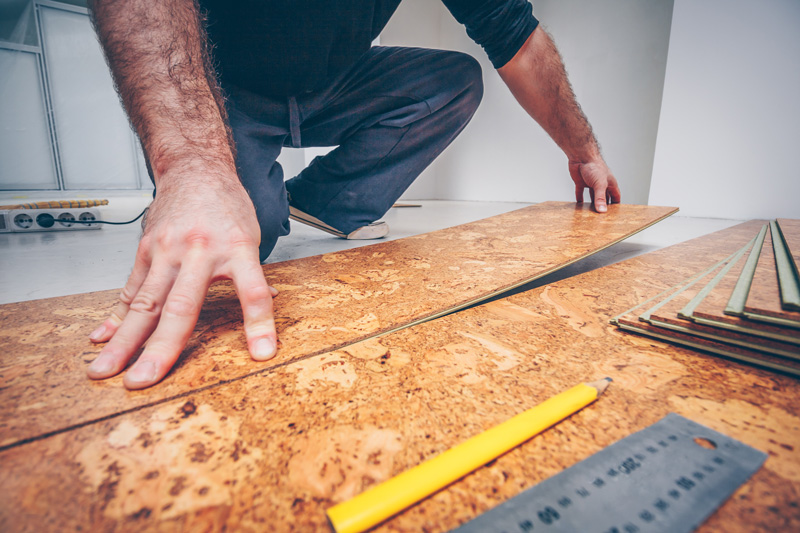
Cork Origins
Cork is the bark of the cork oak tree found in the Mediterranean. Portugal is the largest supplier with over 30% of the world’s cork trees and 70% of the world’s cork production. Every nine years, the bark is harvested by hand with the average tree yielding about 4000 corks.
The bark is honeycomb in nature, containing 90% air that can be compressed to 40% and then quickly returned to its original shape. This feature creates a natural shock absorber.
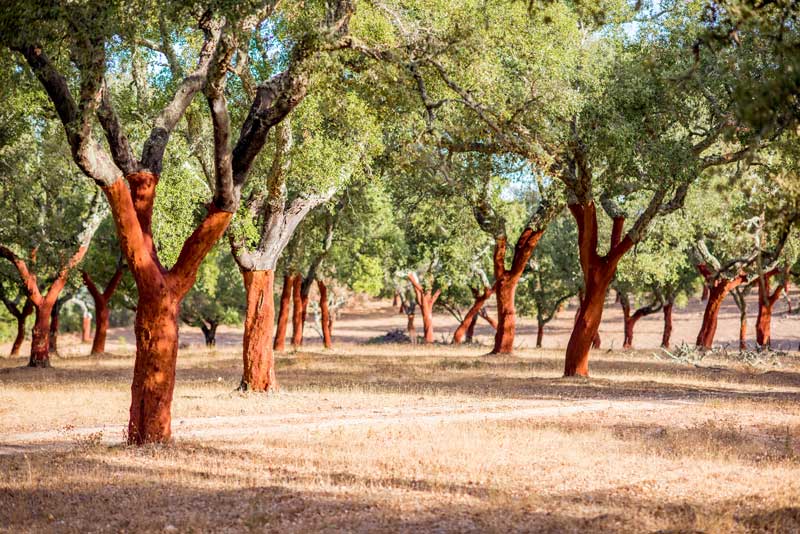
The Various Benefits of Cork Flooring
Cork flooring offers several outstanding benefits to homeowners looking for something new and exciting. One major benefit to most homeowners is the durability of cork flooring. Even high heels and shifting around furniture won’t do any damage. Cork flooring tiles are typically protected with a strong environmentally friendly urethane containing no formaldehyde. When cork is subjected to pressure, the gas in the cells is compressed and volume reduces considerably. When released from pressure, cork recovers very rapidly to its original shape. In addition, cork is remarkably resistant to wear, as it is less affected by impact and friction than other hard surfaces because of its cellular composition.
Another great attribute of cork flooring is that natural cork is a fire inhibitor and won’t spread flames. Cork also does not release any toxic gases on combustion. Furthermore, cork is antimicrobial and insect repellent – even termites are unwelcome.
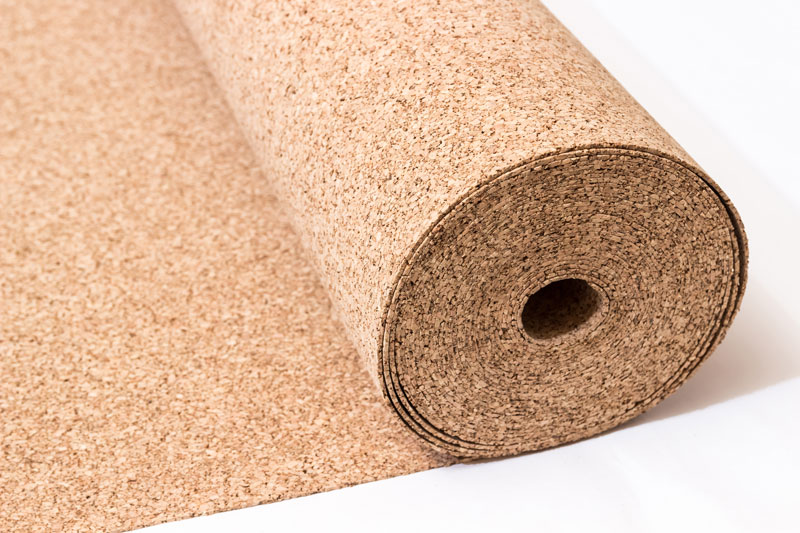
A huge asset of cork flooring is the ease of maintenance. Today, waxing is no longer needed – sweeping and mopping will be the usual maintenance. A few years down the road when the finish starts to wear off, lightly sand the floor and reapply a new coat of urethane. As a result, your floor will last for several decades.
Due to its air-like composition, walking on cork is like walking on air. Its comfortable walking surface is perfect for kitchens when you are standing for lengthy periods of time.
The same feature that makes the floor comfortable creates a natural noise reducer. It’s extremely quiet to walk on and reduces the impact if an object is dropped on its surface. Its insulating effect makes cork a great choice in a bathroom over radiant floor heating or even installed over cold concrete floors.
Cork is an environmentally friendly product in many ways. Since the bark from the tree grows back nine years after harvest, it’s a reusable and sustainable product. It also contains suberin, a substance that is resistant to insects, mold and protects cork from rotting when exposed to moisture. Suberin is naturally fire resistant and cork doesn’t release any toxic gases when it burns.
The durability of cork makes it a perfect choice for virtually any room in the house, including those high traffic areas. It has been successfully used in churches and other public buildings since 1898.
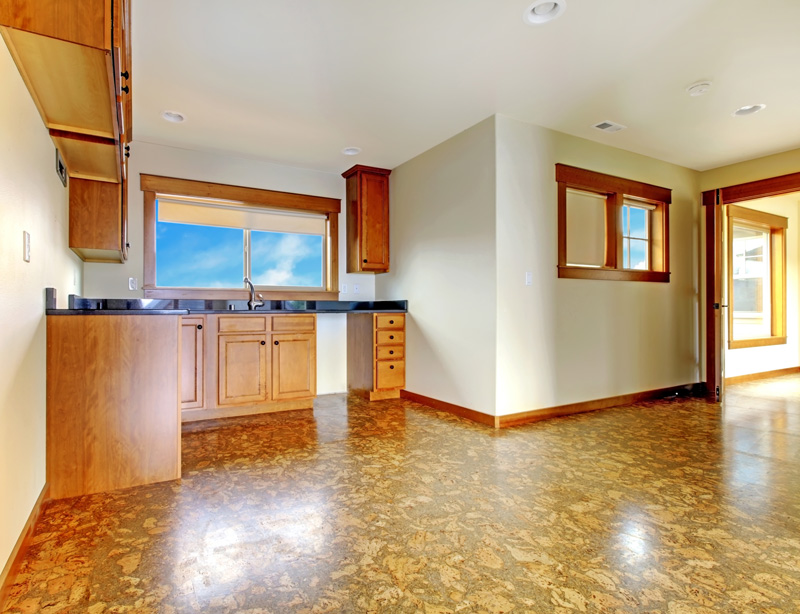
Some Disadvantages of Cork Flooring
Even though there are many benefits to having cork flooring, there are a few drawbacks. However, there are many solutions to these issues. For example, due to its resilience, heavy furniture can dent cork flooring, so it’s important to use castors or furniture pads under table legs. Just as with wood, an excess of water can damage the finish. It shouldn’t be used in areas where you have problems with moisture or flooding.
What to Spend and How to Maintain Cork Flooring
The cost of cork flooring compares to high-end laminate or hardwood flooring. Every store is different, but cork flooring generally costs around $4 to 6$ per square foot.
As previously mentioned, cork floors are extremely easy to maintain with regular sweeping or vacuuming. It is necessary to use a damp mop on the floor monthly with a mild detergent and very little water. In addition, avoid using abrasive or ammonia-based cleaning products.
Cork flooring requires up to five coats of urethane sealer, which will last several years. If the floor begins to dull, it can be refreshed with another coat.
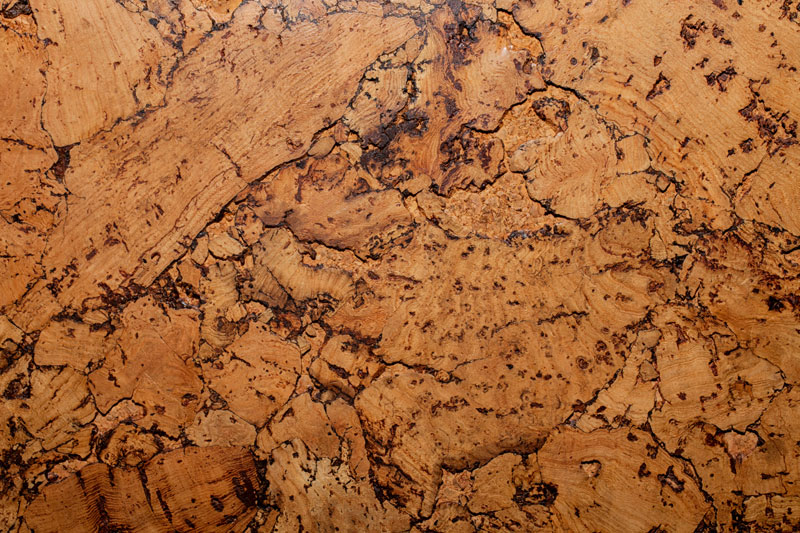 If you found these tips helpful, check out our Ultimate Guide to Choosing Carpets.
If you found these tips helpful, check out our Ultimate Guide to Choosing Carpets.